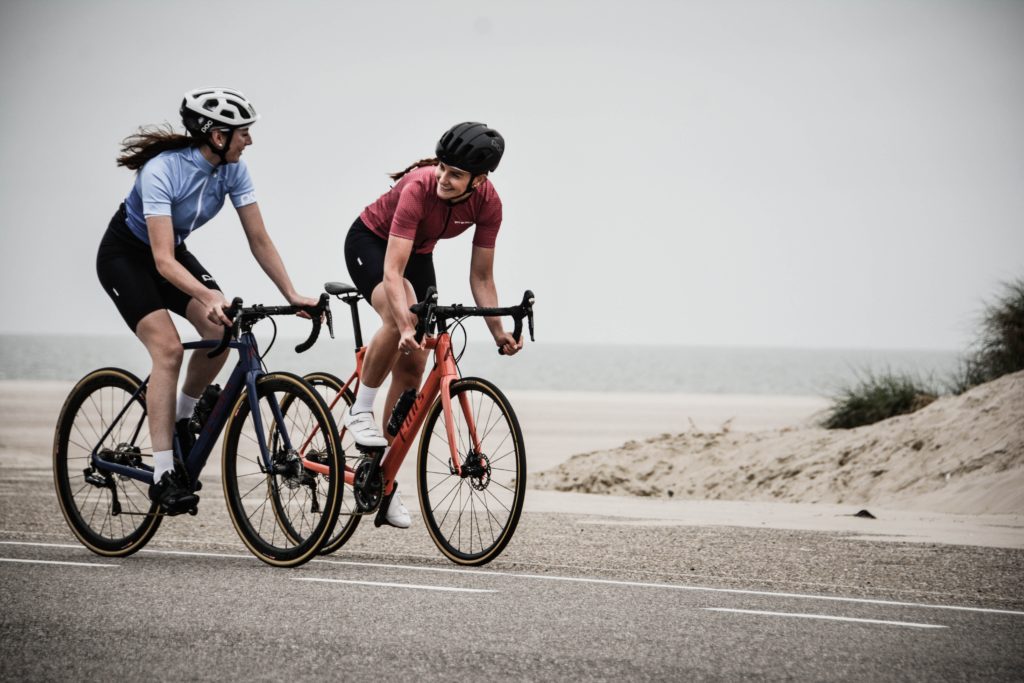
According to the New York Times, there is a shortage and backorder of bicycles this summer due to COVID-19, especially in the cities where public transportation is discouraged. Fortunately, in NEPA, the problem is not so extreme. For those who have a bike, now might be a good time to dust them off and enjoy the many beautiful and well-maintained trails are available at the Countryside Conservancy at Lackawanna State Park, other locations in the Abingtons or the Lackawanna Heritage Valley Authority.
However, whether you head out for 5 or 50 miles, ensuring a proper bike fit should be on your checklist. Riding a bicycle that is properly fit to your style and body will not only help to prevent injury, but allow for a more comfortable riding experience. There are many things to take into consideration when checking your bike fit. First and foremost you must choose a bike that fits your style of riding.
For the sake of simplicity 3 basic styles of bikes include Road bikes, Hybrid bikes and Mountain bikes. Road bikes are designed for long distance riders, hybrid bicycles can be used for longer distance riders, but usually accommodates a recreational cyclist, and mountain bikes are designed for dirt or gravel and technical trails. The next component of ensuring a proper bike fit is making sure that you have a good foundation by choosing the right sized frame. To find the right sized frame you can use the following guidelines as a way to start or simply ask the local bike shop or bike fit consultant of your choice for help.
Road bikes: When straddling the bike you should have about 1” of clearance between your body and the top tube if the bike has a straight top tube (which runs parallel to the ground). When lifting the bike you should have 1” clearance between the tires and the ground. If the bike has a sloping top tube (semi-compact design) you should have a clearance of 2” or more.
Mountain bikes: When straddling the bike lift the bike off the ground and you should have a minimum of 2” clearance between the ground and the tires. With full suspension bikes you will want 1”-2” standover clearance because when you sit on the bike the frame will become lower from compressing the suspension. More aggressive riders will likely have 3”-5” of clearance.
Comfort bikes: Standing over a comfort bike to chose the right sized frame is not necessary. They are commonly designed with a steep sloping top tube and allow the rider to put feet firmly on the ground when the rider comes to a stop.
Now that you have right size for your bike you should adjust the components of the bike to allow for a more comfortable riding experience. Please use the diagram as a point of reference for the following tips. Also be sure to reexamine your bike fit after any bad falls. Keep in mind these measurements are meant to be used as a simple guideline and if you have any pre existing injuries or concerns please be sure to consult your local Physical Therapist or bike fit consultant.


Handlebars (HB)
Knee to Pedal
Foot to Pedal
If you are a recreational cyclist it’s a good idea to take all the proper steps in preventing injury. This article can be used as a reference point to help to prevent common cycling injuries, enhance your comfort and improve your riding efficiency. If you have any further questions about enhancing your bike fit please contact your local physical therapist or bike fit consultant.
Sources: REI.com APTA.org
CoAuthor: Sarah Singer, PTA is a physical therapist assistant at Mackarey Physical Therapy, specializing in orthopedic and sports rehab.

EVERY MONDAY – Read Dr. Paul J. Mackarey “Health & Exercise Forum!” at https://mackareyphysicaltherapy.com/forum/
This article is not intended as a substitute for medical treatment. If you have questions related to your medical condition, please contact your family physician. For further inquires related to this topic email: drpmackarey@msn.com. Paul J. Mackarey PT, DHSc, OCS is a Doctor in Health Sciences specializing in orthopaedic and sports physical therapy. Dr. Mackarey is in private practice in downtown Scranton and is an associate professor of clinical medicine at GCSOM.